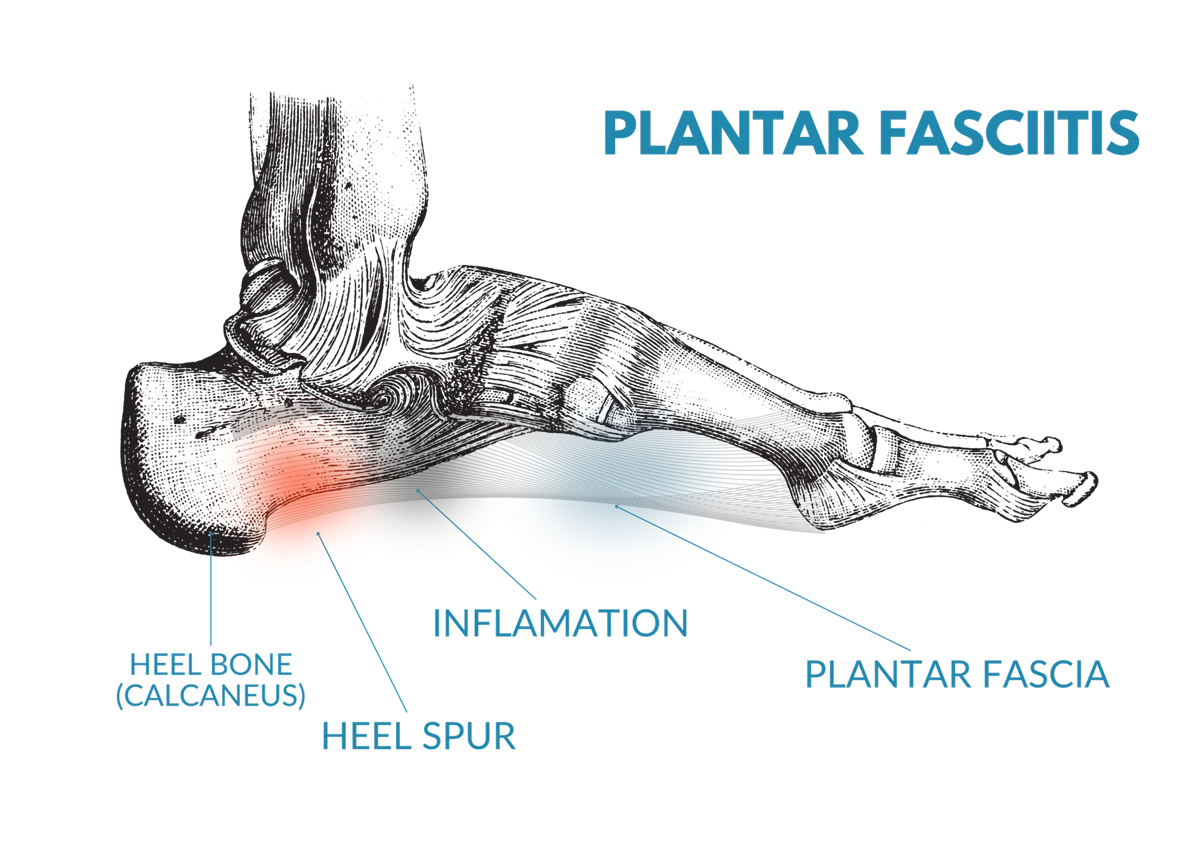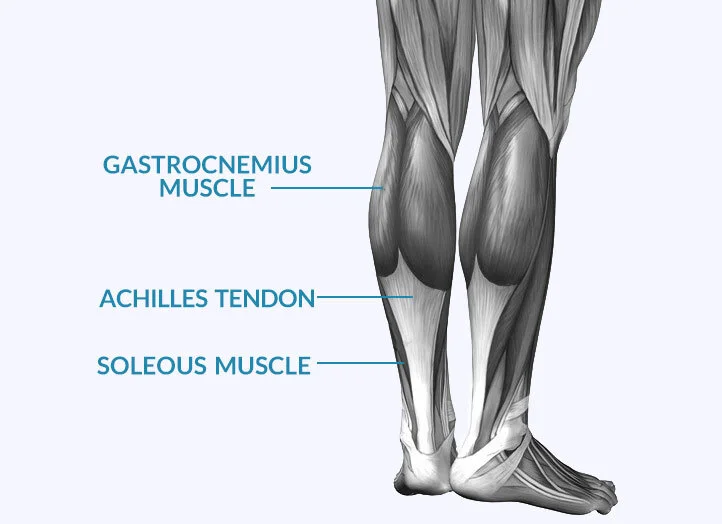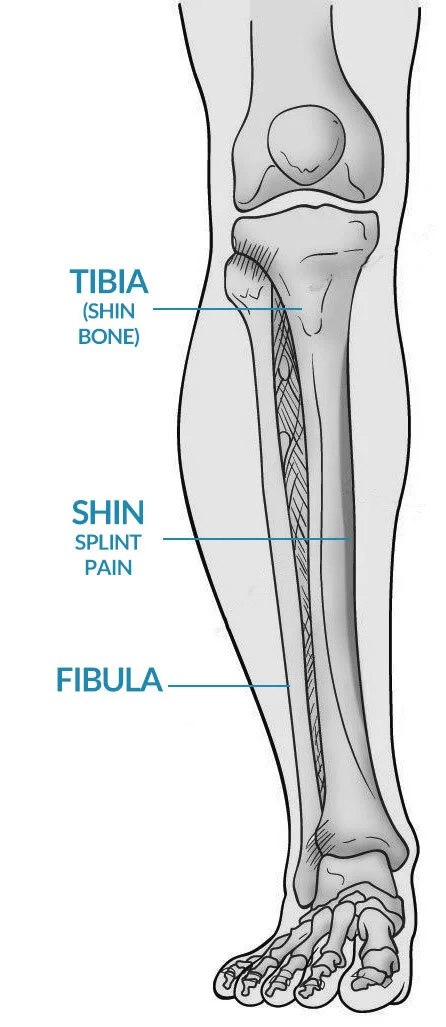Plantar fasciitis is foot pain caused by inflammation of the band of tissue (plantar fascia) that connects your heel bone to your toes. The most common reason someone might develop plantar fasciitis is tight calves. Tight calves pull the heel bone towards them, which in turn, applies extra tension to the plantar fascia, eventually leading to pain and discomfort.


Achilles tendinopathy is a term used to describe any problem with the tendon, including tendinitis and tendinosis. Achilles tendonitis generally refers to acute inflammation of the tendon due to small micro tears. Achilles tendinosis on the other hand, is the non-inflammatory degeneration of the Achilles tendon including changes to the structure of the tendon. Although Achilles tendinosis is a more serious condition than Achilles tendonitis, and overall treatment differs between the two, the treatment below is beneficial for both. Speak with a health care professional prior to treatment.
a. Concentric (Lifting) Phase:
b. Isometric Hold Phase:
C. Eccentric (Lowering) Phase:
Shin splints, medically known as medial tibial stress syndrome, is a common condition characterized by pain and discomfort along the shin bone (tibia) on the front or inner part of the lower leg. This condition often occurs in athletes, particularly those who have recently intensified their exercise routine or engaged in high-impact activities. Shin splints are generally not a severe injury, but they can be painful and cause disruptions to physical activities if not managed properly.


A calf strain is an injury that occurs when the calf muscles are stretched beyond their normal limits, and the muscle fibres or tendons become damaged. It is a common injury, especially among athletes and individuals who engage in activities that involve running, jumping, or sudden changes in direction. A calf strain can range from mild to severe, depending on the extent of the muscle damage.
If you’ve experienced a calf strain, it’s important to prioritize your recovery and follow a gradual approach to returning to exercise. Calf strains can vary in severity, so it’s recommended that you get the injury evaluated by a healthcare professional before resuming any physical activities. Once you’ve received clearance to exercise, consider the following steps to incorporate the Regen Calf Trainer into your workout routine:
At Regen Training, we strive to provide the most convenient self- improvement available. Reinvent yourself your way.
| Location | Regen Training Calgary, Alberta, Canada |
|---|---|
| Phone | (250) 801 – 0096 |
| info@regentraining.com |